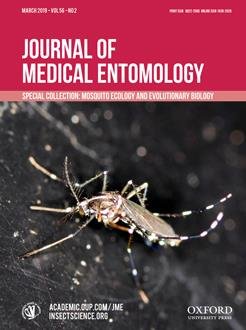Sustaining high levels of indoor residual spraying (IRS) coverage (≥85%) for community protection against malaria remains a challenge for IRS campaigns. We examined biting rates and insecticide resistance in Culex species and Anopheles gambiae s.l., and their potential effect on community adherence to IRS. The average IRS coverage in urban Malabo between 2015 and 2017 remained at 80%. Culex biting rate increased 6.0-fold (P < 0.001) between 2014 and 2017, reaching 8.08 bites per person per night, whereas that of An. gambiae s.l. remained steady at around 0.68. Although An. gambiae s.l. was susceptible to carbamates and organophosphates insecticides, Culex spp. were phenotypically resistant to all four main classes of WHO-recommended IRS insecticides. Similarly, the residual activity of the organophosphate insecticide used since 2017, ACTELLIC 300CS, was 8 mo for An. gambiae s.l., but was almost absent against Culex for 2 mo post-spray. A survey conducted in 2018 within urban Malabo indicated that 77.0% of respondents related IRS as means of protection against mosquito bites, but only 3.2% knew that only Anopheles mosquitoes transmit malaria. Therefore, the increasing biting rates of culicines in urban Malabo, and their resistance to all IRS insecticides, is raising concern that a growing number of people may refuse to participate in IRS as result of its perceived failure in controlling mosquitoes. Although this is not yet the case on Bioko Island, communication strategies need refining to sensitize communities about the effectiveness of IRS in controlling malaria vectors in the midst of insecticide resistance in nonmalaria vector mosquitoes.
How to translate text using browser tools
18 March 2019
Increased Biting Rate of Insecticide-Resistant Culex Mosquitoes and Community Adherence to IRS for Malaria Control in Urban Malabo, Bioko Island, Equatorial Guinea
Godwin Fuseini,
Raul Ncogo Nguema,
Wonder P. Phiri,
Olivier Tresor Donfack,
Carlos Cortes,
Michael E. von Fricken,
Jacob I. Meyers,
Immo Kleinschmidt,
Guillermo A. Garcia,
Carl Maas,
Christopher Schwabe,
Michel A. Slotman
ACCESS THE FULL ARTICLE
It is not available for individual sale.
This article is only available to subscribers.
It is not available for individual sale.
It is not available for individual sale.

Journal of Medical Entomology
Vol. 56 • No. 4
July 2019
Vol. 56 • No. 4
July 2019
Bioko Island
Culex
indoor residual spraying adherence
insecticide resistance
Malaria control




